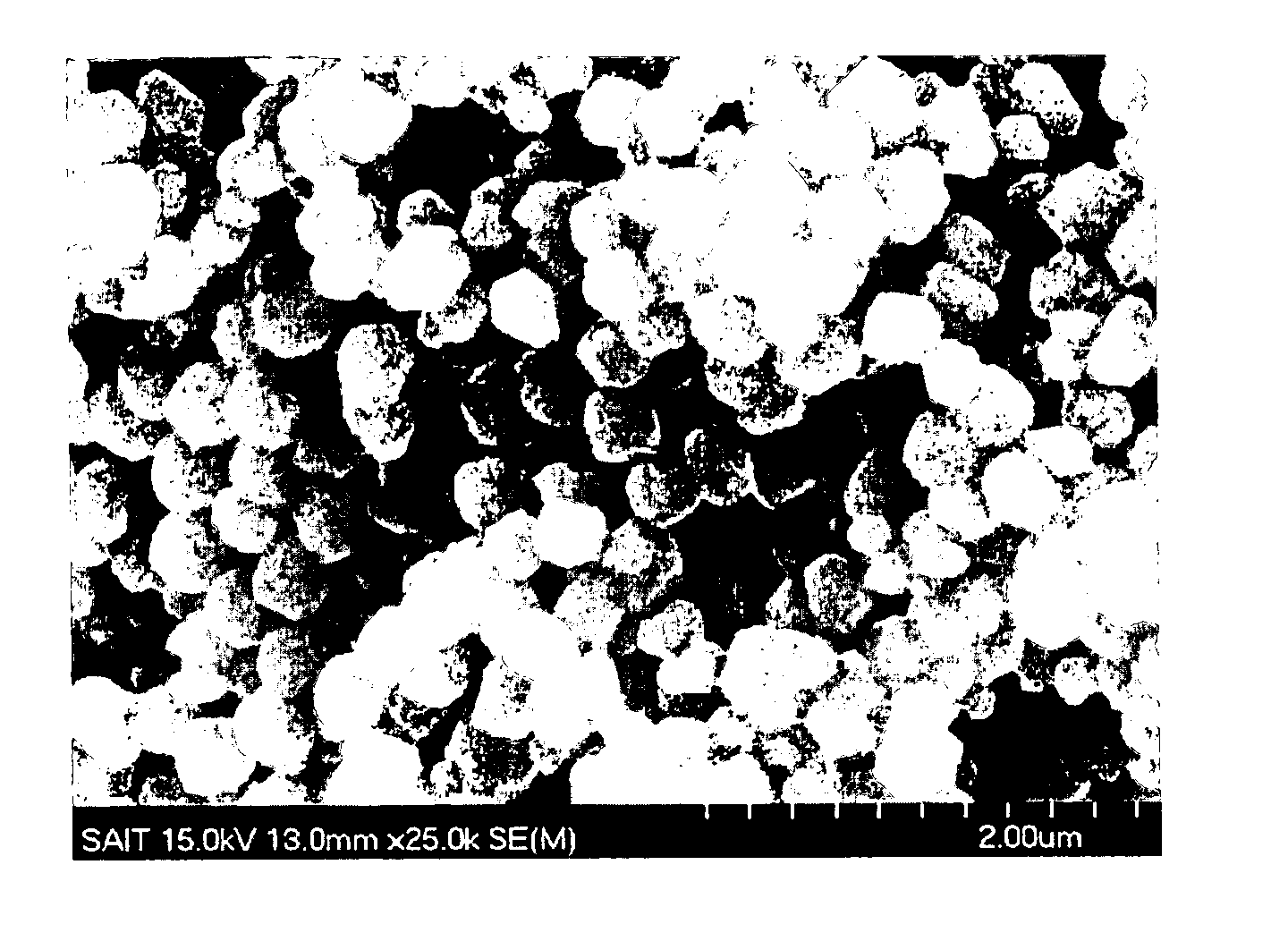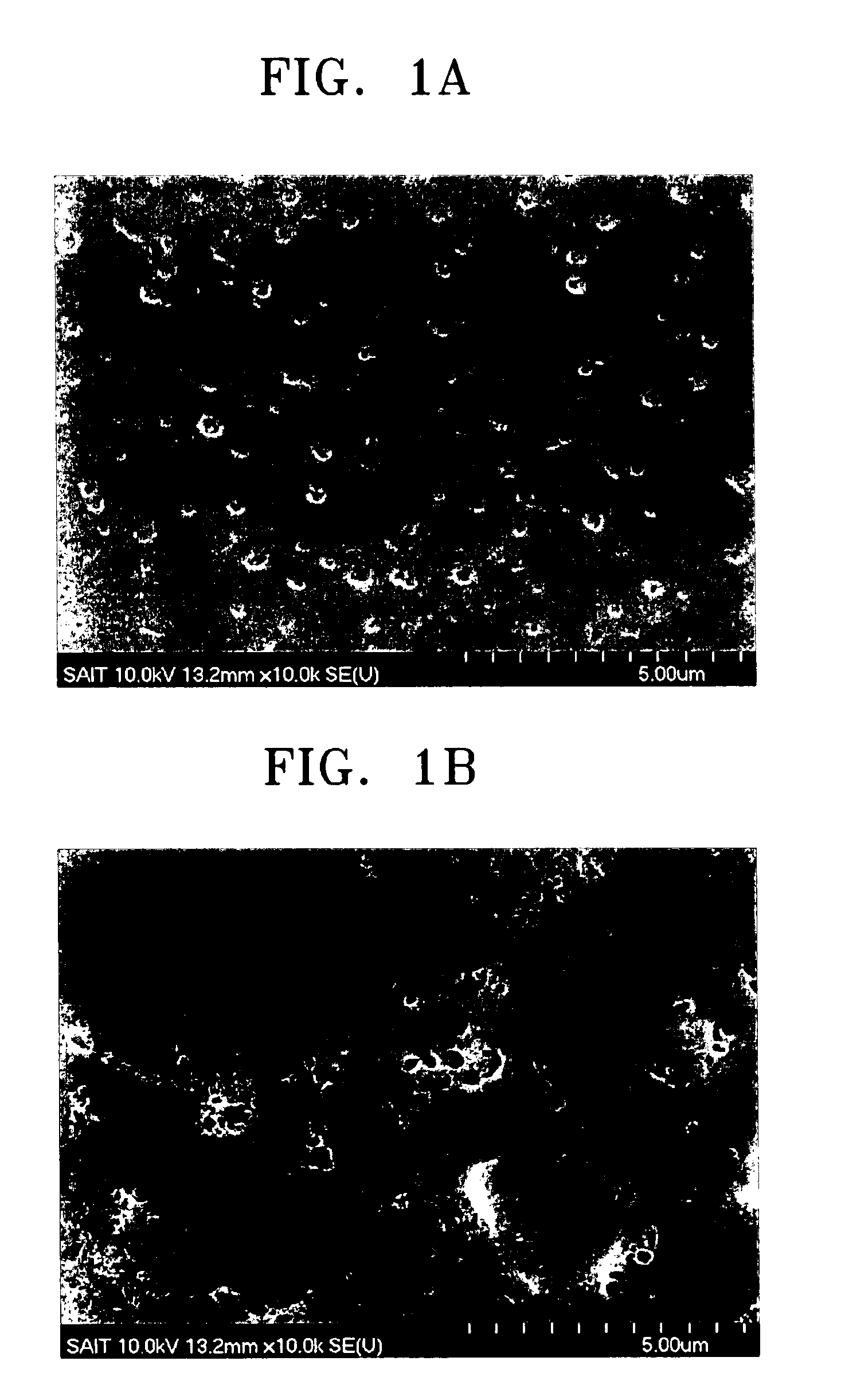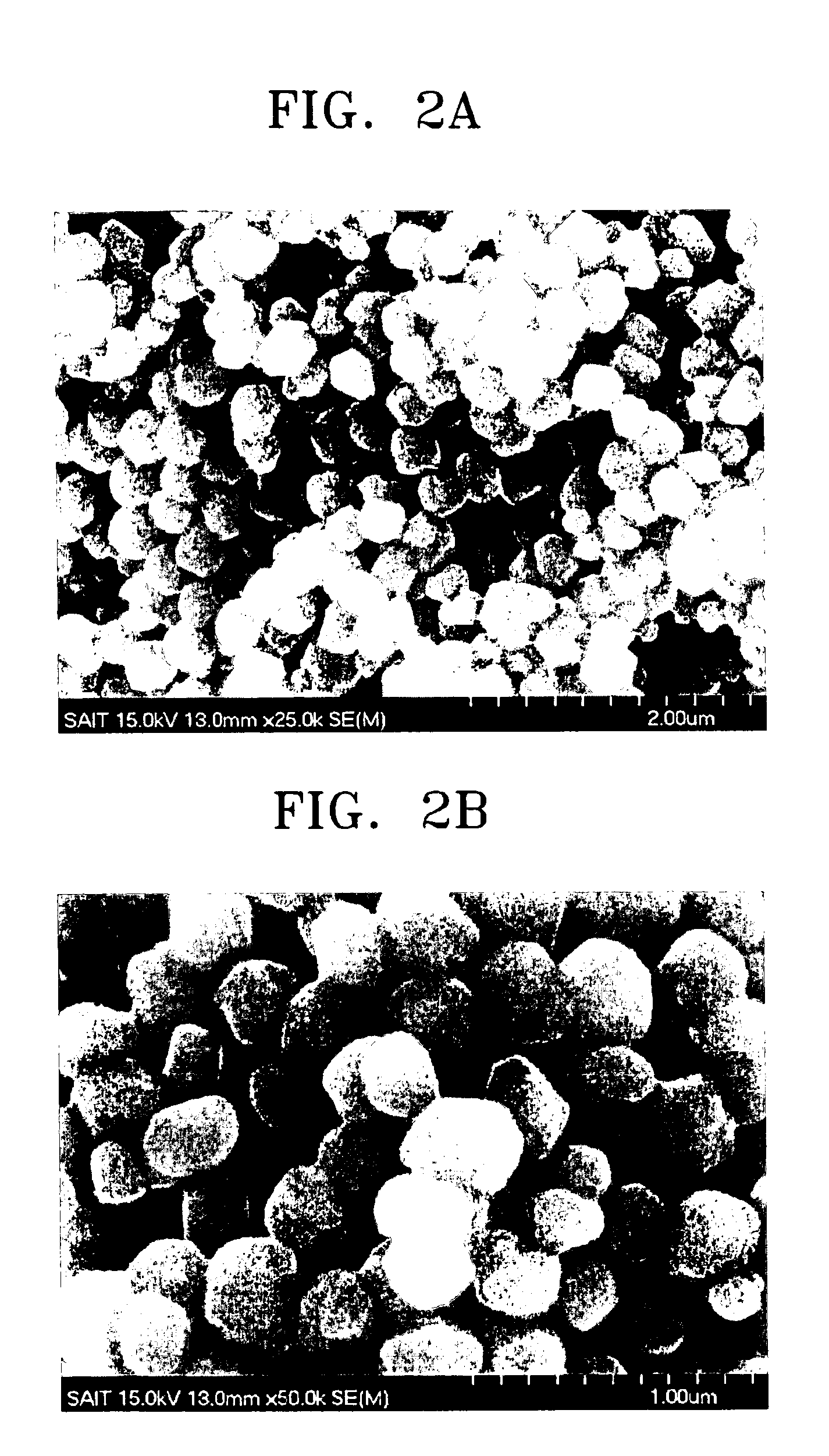Electrode for fuel cell, method of producing the same, and fuel cell including the electrode
a fuel cell and electrode technology, applied in the direction of cell components, final product manufacturing, sustainable manufacturing/processing, etc., can solve the problems of inability to use at temperatures above 80° c, non-uniformity, and fuel cells using such perfluorosulfonated polymer-based proton conductors, etc., to achieve excellent sustained ionic conductivity
- Summary
- Abstract
- Description
- Claims
- Application Information
AI Technical Summary
Benefits of technology
Problems solved by technology
Method used
Image
Examples
example 1
[0074] 0.6 g of metaphosphoric acid, 0.12 g of silicic acid, and 3g of Pt / C were mixed with 30 g of water. The mixture was thermally treated in a convection oven of 130° C. for 24 hours to prepare a transparent amorphous sample.
[0075] The transparent amorphous sample was cooled to room temperature, milled in a mortar, and then sieved to collect a proton conductor containing powder having an average diameter of about 100 nm.
[0076] 1 g of the proton conductor containing powder was mixed with 0.05 g of polyvinylidenefluoride and 1.5 g of N-methylpyrrolidone to prepare a catalyst layer forming composition slurry.
[0077] The catalyst layer forming composition slurry was bar coated on a carbon paper and dried to obtain an electrode (2.8 cm×2.8 cm) for a fuel cell including a catalyst layer formed on a carbon paper. In the electrode, the total amount of P2O5 and SiO2 acting as a proton conductor was about 25 parts by weight based on 100 parts by weight of a support catalyst, and the mixt...
example 2
[0078] An electrode for a fuel cell was produced in the same manner as in Example 1, except that 0.24 g of boric acid was used instead of 0.12 g of silicic acid. In the electrode, the total amount of P2O5 and B2O3 acting as a proton conductor was about 30 parts by weight based on 100 parts by weight of a support catalyst, and the mixture ratio of P2O5 to B2O3 was 1:0.4.
[0079] Polybenzimidazole (PBI) films as a polymer electrolyte film were attached to both surfaces of each of the electrodes prepared according to Examples 1 and 2 to produce a unit cell. The performance test on respective unit cells was performed while providing 0.1 L / min of hydrogen and 0.2 L / min of air as a fuel at an operational temperature of 150° C. The results are shown in FIG. 10.
[0080] Referring to FIG. 10, fuel cells including the electrodes prepared according to Example 1 and Example 2 exhibited high voltage of 0.55 V at a current density of about 200 mA / cm2.
example 3
[0081] 10 g of (HPO3)6 and 4 g of H3BO3 were dissolved in 100 g of water. At this ti beaker was used since the liquid phosphoric acid was known to react with a glass vessel (PYREX) at high temperature. A clear solution obtained by completely dissolving the phosphoric acid and the boric acid in the water was thermally treated in a convection oven, which had been set to 120° C., for 24 hours. As a result, a transparent amorphous sample was obtained.
[0082] The sample was cooled to room temperature and milled in a mortar. 0.3 g of the powders thus obtained was placed in a pellet jig and a pressure of 3,000 psia was applied thereto for one minute to thereby obtain pellets which were 1.3 cm in diameter and 1 mm in thickness. The pellets thus obtained were inserted in the middle of a stainless steel (SUS) electrode with a diameter of 1.5 cm and compressed to measure proton conductivity. As a result, the proton conductivity was found to be 0.0035 S / cm at 120° C.
PUM
| Property | Measurement | Unit |
|---|---|---|
| Temperature | aaaaa | aaaaa |
| Percent by mass | aaaaa | aaaaa |
| Percent by mass | aaaaa | aaaaa |
Abstract
Description
Claims
Application Information
 Login to View More
Login to View More - R&D
- Intellectual Property
- Life Sciences
- Materials
- Tech Scout
- Unparalleled Data Quality
- Higher Quality Content
- 60% Fewer Hallucinations
Browse by: Latest US Patents, China's latest patents, Technical Efficacy Thesaurus, Application Domain, Technology Topic, Popular Technical Reports.
© 2025 PatSnap. All rights reserved.Legal|Privacy policy|Modern Slavery Act Transparency Statement|Sitemap|About US| Contact US: help@patsnap.com



